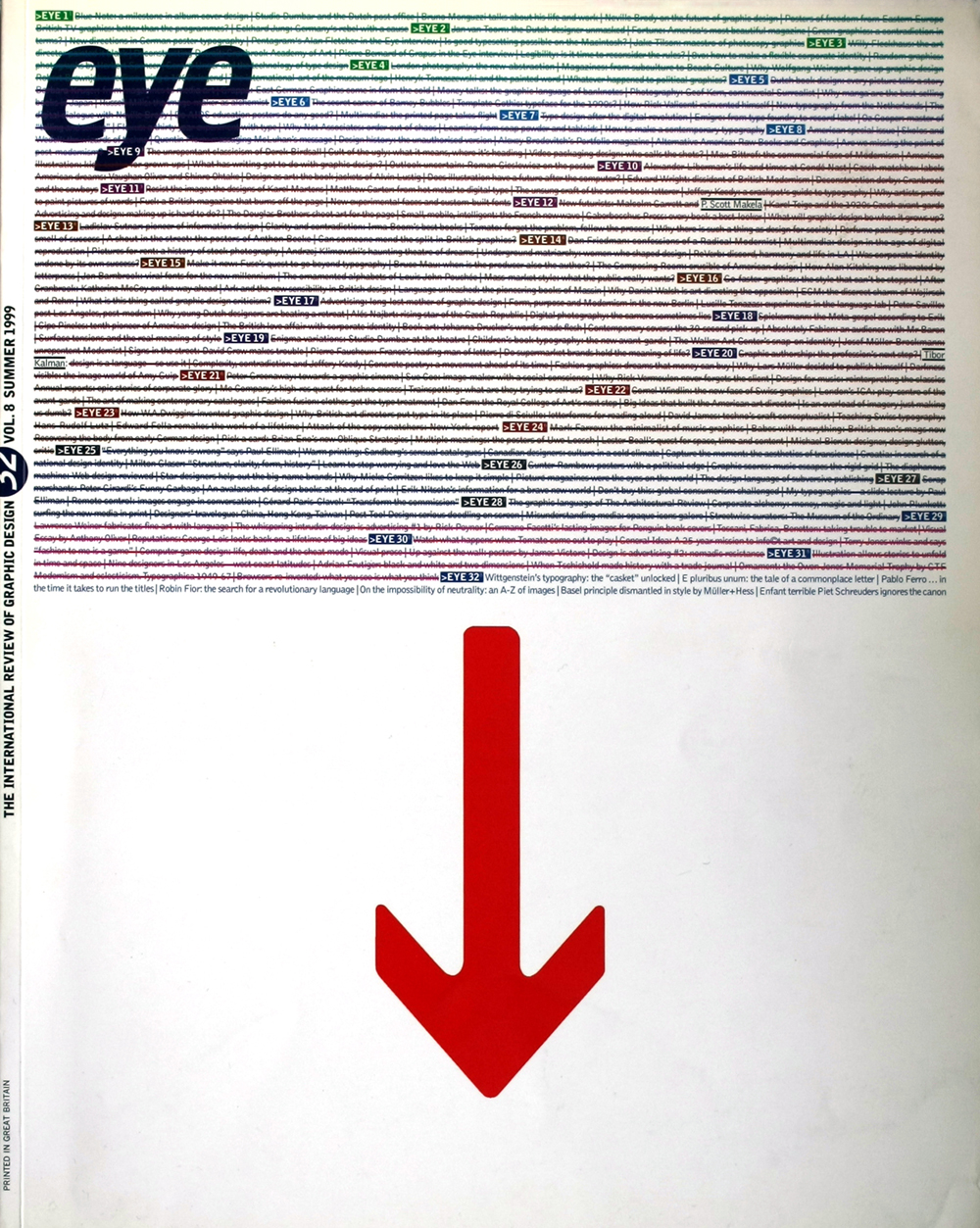
Opinion
Editorial,
Max Bruinsma
Is there any use in overturning the existing hierarchies between verbal and visual form?
Graphic design,
Agenda,
Ian Noble, Russell Bestley
Serious discussions of the relationships between message, audience and graphic design are still handicapped by a limited lexicon. Yet our need for an enriched language is greater than ever.
Features
Max Bruinsma, Chris Vermaas
‘I don’t want to know the canon, because it is completely irrelevant and transient. If you fight the canon you become a product of its system’
Steven Heller
or: how graphic designer Pablo Ferro learned to split the screen, cut the crap and tell the story (in the time it took to run the titles)
Paul Elliman
An inquiry into myriad associations originating from this most abundantly occurring symbol in our writing: that fifth sign of our Roman ABC.
Rick Poynor
When Donald Wall made this book about Italian architect Paolo Soleri, he uncannily projected a vision of 1990s typography in its most radical form. By Rick Poynor
Emily King
The freewheeling global agenda of Müller+Hess both destroys and revives the typographic traditions of their home town.
Muller+Hess
Seclusion is not an option in a global culture where information, money and images move mountains and ignore boundaries.
Yvonne Schwemer-Scheddin
In the Wiener Ausgabe, Michael Nedo translated Wittgenstein’s wide-ranging and intertwined philosophical remarks into typographic form
Ursula Held
For the renovations at the Centre Pompidou in Paris, Pierre Bernard devised a temporary system of signs and type to be hoisted high and crossed out.
Richard Hollis
“A revolutionary graphic language must seek to expose the meaning by presenting a chain of ideas, images, structures in as much of their complexity as is economically feasible.” Robin Fior in The Designer, journal of the society of industrial artists and designers, London, May 1972.
